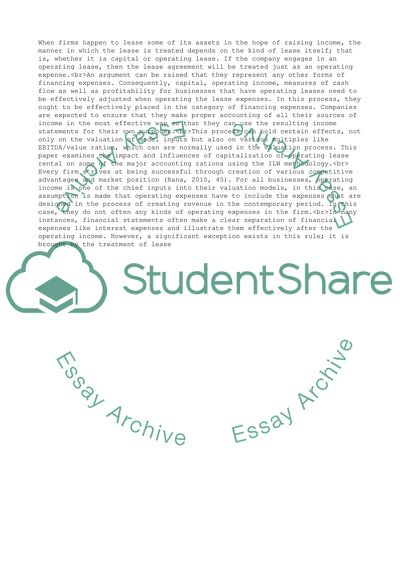Cite this document
(Write a report to the management of the company measuring the impact Essay, n.d.)
Write a report to the management of the company measuring the impact Essay. https://studentshare.org/finance-accounting/1851739-write-a-report-to-the-management-of-the-company-measuring-the-impact-of-the-capitalisation-of-operating-lease-rentals-on-the-key-accounting-ratios-using-the-ilw-methodology-where-appropriate-discuss-possible-reasons-for-the-delay-in-revising-ias-17
Write a report to the management of the company measuring the impact Essay. https://studentshare.org/finance-accounting/1851739-write-a-report-to-the-management-of-the-company-measuring-the-impact-of-the-capitalisation-of-operating-lease-rentals-on-the-key-accounting-ratios-using-the-ilw-methodology-where-appropriate-discuss-possible-reasons-for-the-delay-in-revising-ias-17
(Write a Report to the Management of the Company Measuring the Impact Essay)
Write a Report to the Management of the Company Measuring the Impact Essay. https://studentshare.org/finance-accounting/1851739-write-a-report-to-the-management-of-the-company-measuring-the-impact-of-the-capitalisation-of-operating-lease-rentals-on-the-key-accounting-ratios-using-the-ilw-methodology-where-appropriate-discuss-possible-reasons-for-the-delay-in-revising-ias-17.
Write a Report to the Management of the Company Measuring the Impact Essay. https://studentshare.org/finance-accounting/1851739-write-a-report-to-the-management-of-the-company-measuring-the-impact-of-the-capitalisation-of-operating-lease-rentals-on-the-key-accounting-ratios-using-the-ilw-methodology-where-appropriate-discuss-possible-reasons-for-the-delay-in-revising-ias-17.
“Write a Report to the Management of the Company Measuring the Impact Essay”. https://studentshare.org/finance-accounting/1851739-write-a-report-to-the-management-of-the-company-measuring-the-impact-of-the-capitalisation-of-operating-lease-rentals-on-the-key-accounting-ratios-using-the-ilw-methodology-where-appropriate-discuss-possible-reasons-for-the-delay-in-revising-ias-17.


